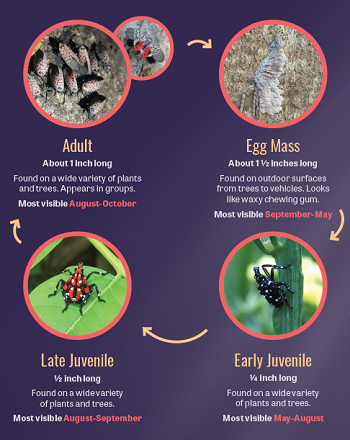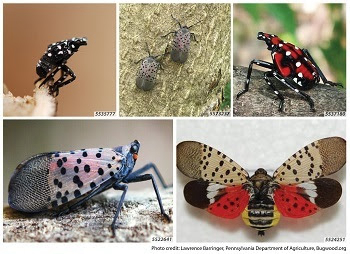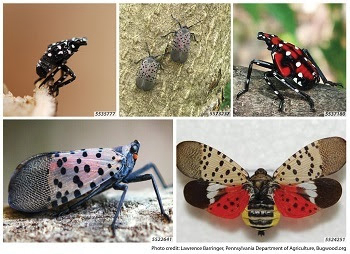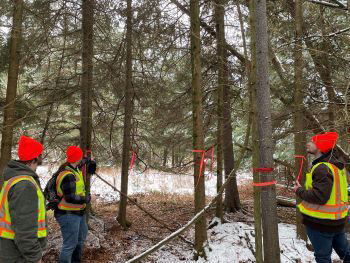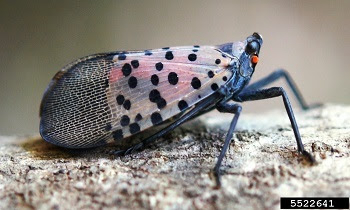Michigan: spotted lanternfly confirmed in Monroe County
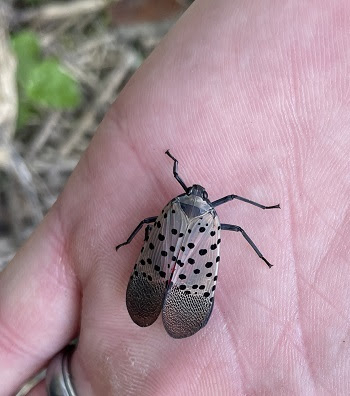
Michigan’s second detection of invasive insect
LANSING– Monday, the Michigan Department of Agriculture and Rural Development confirmed the state’s second detection of invasive spotted lanternfly (Lycorma delicatula) in Monroe County. A small population of juvenile spotted lanternfly was recently detected in Lambertville, with the U. S. Department of Agriculture confirming the finding on June 17.
“The infestation was detected through spotted lanternfly monitoring traps deployed by Michigan State University, as part of collaborative survey initiatives with MSU, MDARD, and the USDA,” said Steve Carlson, MDARD’s Pesticide and Plant Pest Management Division Director. “This work is a critical component of our ongoing efforts to identify and limit the spread of spotted lanternfly in Michigan.”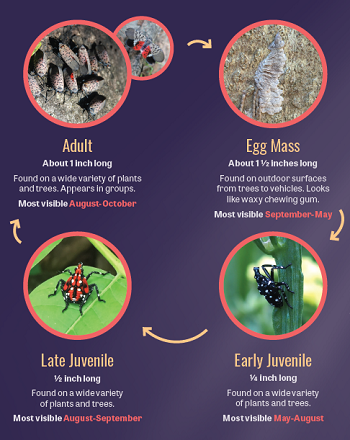
Spotted lanternfly is an invasive plant hopper native to eastern Asia. First found in the United States in 2014 in southeastern Pennsylvania, spotted lanternfly has spread rapidly through the eastern states. Confirmed observations of spotted lanternfly have since been recorded in 17 eastern and midwestern states.
“MDARD is working with the Michigan Department of Natural Resources, USDA, and Cooperative Invasive Species Management Areas to determine the scope of the infestation,” added Carlson. “We are currently in the assessment stage of response and will use the data we collect in the field to determine an appropriate response.”
Spotted lanternfly has various life stages. Juveniles, known as nymphs, which resemble small, wingless black to red beetles with white spots, are found in the early summer, with adults, characterized by gray to brown outer wings with black spots, emerging in late summer.
Spotted lanternfly moves easily on firewood, tires, campers, vehicles and more. Prevention and early detection are vital to limiting the spread of spotted lanternfly. If you find a spotted lanternfly egg mass, nymph or adult, take one or more photos, make note of the date, time and location of the sighting, and report it online to Eyes in the Field. Photos are necessary to verify a report and to aid in identification.
Spotted lanternfly prefers to feed on the invasive tree-of-heaven (Ailanthus altissima), but also feeds on a wide range of plants including grapevines and trees such as black walnut, river birch, willow, sumac, and red maple. When feeding, spotted lanternfly produces a sticky liquid, honeydew, that can collect on the ground or surrounding vegetation. This results in the growth of sooty mold, which can discolor and kill plants.
What can you do?
Everyone can help prevent the spread of spotted lanternfly. Remember to “See it. Squish it. Report it.”
- Check your vehicle: Before leaving a parking lot or work site, inspect vehicles for spotted lanternfly egg or insects. Check doors, sides, bumpers, wheel wells, grills, and roofs. Destroy any eggs or insects you find.
- Park with windows closed: The spotted lanternfly and its nymphs can enter vehicles unsuspectedly. When parked, make sure to keep windows closed.
- Remove and destroy pests: Crush nymphs and adult insects. Scrape egg masses into a plastic bag containing hand sanitizer or rubbing alcohol to kill them.
- Report sightings: Send in reports with photos to Eyes in the Field. Photos are necessary to verify a report and to aid in identification.
For additional information on identifying or reporting spotted lanternfly, visit Michigan.gov/SpottedLanternfly. You can also learn more at USDA’s spotted lanternfly website found at USDA APHIS | Spotted Lanternfly.



